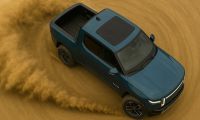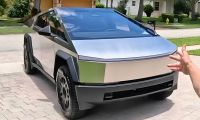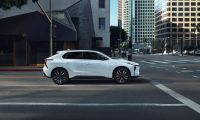Battery Barriers
What are the challenges to creating an EV battery? Basically it comes down to this:
- Generating a greater capacity for charge.
- Providing more power in a smaller package.
- Keeping cells as light as possible because it takes a lot of cells to power an EV.
- Ease of manufacture on a mega scale using less expensive components.
- And let’s not forget safety. Spacing between cells in a pack and thermal controls to prevent one cell from igniting another cell in a runaway chain reaction disaster scenario adds to the complexity of battery development for EVs.
In other words, it’s all about cost and performance---a balancing act where the kilowatt hours (kWh) achieved need to provide the most range, but at a reasonable manufacturing cost.
Your Basic Battery Pack
EV battery packs typically consist of three major parts: the battery cells, the battery management system(s), and a container of sorts to hold it all together.
However, the cell part is what affects the other two in automotive design and is where the majority of the focus and work is done toward making a better battery with the final goal of achieving a “superbattery” that will give EV owners what they want:
- Relief from any range anxiety by providing more mileage per charge in an EV battery.
- Short charging times because we are all in a hurry.
- A price that is the same or less than what you pay and get, with an equivalent vehicle powered by an internal combustion engine.
In effect, a trifecta of automotive perfection that is hoped by many to turn the U.S. into an all-EV country all in the name of “Going Green.”
However, in truth there is so much more than the inner workings of the cell. A lot of thought toward physical design comprises a big component of how the cells---regardless of the type---are decked into the vehicle depending on the model.
The 4680 versus the 21790 Update
To help consumers understand the differences between the battery cell types used in Tesla and other EVs, and how they are physically mounted into their model of vehicle, here is a recent Munro Live YouTube channel episode that highlights the key differences in structure, cells, cost, and more, between Tesla's 4680- and 2170-based Model Y battery packs using teardowns of packs and their physical decking to the vehicle.
In the video you will discover:
- A reminder that the “name” of the cells is actually a description of the form factor of the cell type.
- The size and battery pack difference between the 4680 and the 2170 cells.
- Who develops which cell type and which Tesla models they are installed in.
- The trade-offs between choosing one cell type over another.
- How many cells of each type are fitted into a battery pack.
- What the battery pack and inner module structure actually looks like dissected open with both cell types as an in-depth “show and tell" of how battery packs are actually built.
- How the battery packs are protected from side impact accidents.
- How cell can design has changed and why.
- How the final “decking” assembly of the battery packing differs between models and which have changed.
That said, here is a great chance to see how your battery pack is integrated with your model of Tesla:
Tesla's Battery Evolution: 4680 vs 2170 Cell Comparison
For additional articles related to EV batteries, here are two for your consideration:
- Hydrogen Fuel Versus Lithium Ion Versus Solid State Batteries in Cars
- From Lithium Mine to Tesla Battery Line
Timothy Boyer is an automotive reporter based in Cincinnati. Experienced with early car restorations, he regularly restores older vehicles with engine modifications for improved performance. Follow Tim on “Zen and the Art of DIY Car Repair” website, the Zen Mechanic blog and on Twitter at @TimBoyerWrites and Facebook for daily news and topics related to new and used cars and trucks.
COMING UP NEXT: Ford EcoBoost Engine Aftermarket Upgrade Spectacular Failure
Image source: Deposit Photos











